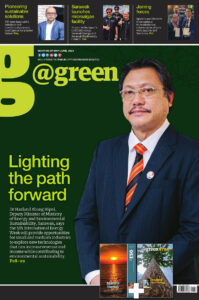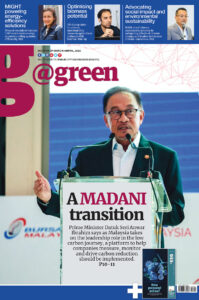Banks can demonstrate that their funding of FRCs is sustainable by increasing transparency
The world’s forests are critical in fighting climate change, contributing up to one-third of the mitigation needed to limit the global temperature rise to 1.5 ˚Celsius.
Among a host of ecosystem services they provide, forests also form a buffer to reduce zoonotic diseases spillover risk. Considering the current Covid-19 pandemic, the need to protect and restore the world’s forests has never been more evident.
Global environmental non-profit CDP unveiled the findings of their Financial Services Climate Change and Forests Pilot Questionnaire: the first structured, self-reported disclosure framework for banks to report climate and forest lending.
The report was launched at a virtual webinar moderated by Corrado Forcellati, Sustainability Services Director, KPMG Singapore, with panellists Rizal Mohamed Ali, Responsible Investment Vice President, KWAP; Felia Salim, Director, AndGreen Fund and Meixi Gan, Sustainability Deputy Director, Singapore Institute of International Affairs.
Key findings from these unique disclosures highlight that whilst banks have started to integrate environmental concerns into their structures and processes, there is significant progress to be made on long-term strategy and financing of FRCs.
The results also confirmed that banks’ loan books have a vastly larger impact than their operations, with portfolio emissions potentially some 400 times higher than direct emissions.
Although the participating banks can describe their environmental risks well, their responses suggest they are currently more focused on one side of the ‘double materiality approach’.
This means that while banks generally assess how environmental issues could affect their portfolios, they are less likely to determine how their portfolios would impact the environment.
While global banks are ahead of Southeast Asian banks in many areas, CDP notes that forests’ disclosure must improve overall. This primarily relates to the financing of FRCs like timber, palm oil, cattle and soy – which are the most significant cause of forests degradation and loss globally.
Only one bank participating in the pilot disclosed their financing of FRCs. Banks can demonstrate that their funding of FRCs is sustainable by increasing transparency.
Also, the disclosures revealed great opportunities for banks in financing the transition to a low-carbon, forest-positive future. The potential financial impacts of environmental options disclosed outweigh the potential effects of risks disclosed, as well as the anticipated costs to achieve those opportunities.
One area of opportunity highlighted by almost all banks was providing financing to agricultural smallholders. Despite their significance in palm oil and rubber production, a lack of access to credit for smallholder producers is driving behaviours that result in forest loss and increased emissions.
The smallholder financing and other engagement approaches disclosed by the banks represent opportunities to advance the environmental aspect of sustainability and the social part.
CDP’s report recognises the financial services sector is crucial in achieving the transition to a low-carbon and forest-positive economy. Financial services companies’ influence extends far beyond their immediate operations to enable activities on the broader economy, which places them in a unique position to catalyse change by engaging with the companies they lend to, investing in, and insuring.
To this end, CDP concludes with recommendations for banks to trigger a leap forward to sustainable economies, starting from standardised, tailored disclosure of their impacts as the critical first step. Other recommendations include:
• implementing board-level oversight across environmental issues;
• ensuring time horizons, assessments and processes around ecological issues are of a long-term nature;
• strengthening reporting frameworks and fully disclosing lending practices;
• considering the interconnectivity of forests with climate change, water and the natural world properly assess risks, opportunities, and impacts.
Pratima Divgi, Director, Hong Kong, Southeast Asia, Australia & New Zealand at CDP commented: “The financial services sector is the missing link to sustainable economies and plays a crucial role in mitigating climate change, driving the next evolution in CDP disclosure: pioneering forest-related indicators specifically for banks.
“Those that are leading the transition to sustainable financing activities will gain competitive advantage and improved long-term returns. CDP is a key partner in the journey toward corporate responsibility, and disclosure is a positive first step to achieving a sustainable future for people and planet.”
Over the coming years, CDP will develop the financial services questionnaire to expand reporting globally to investors and insurers and integrate a comprehensive range of environmental themes. — @Forest








